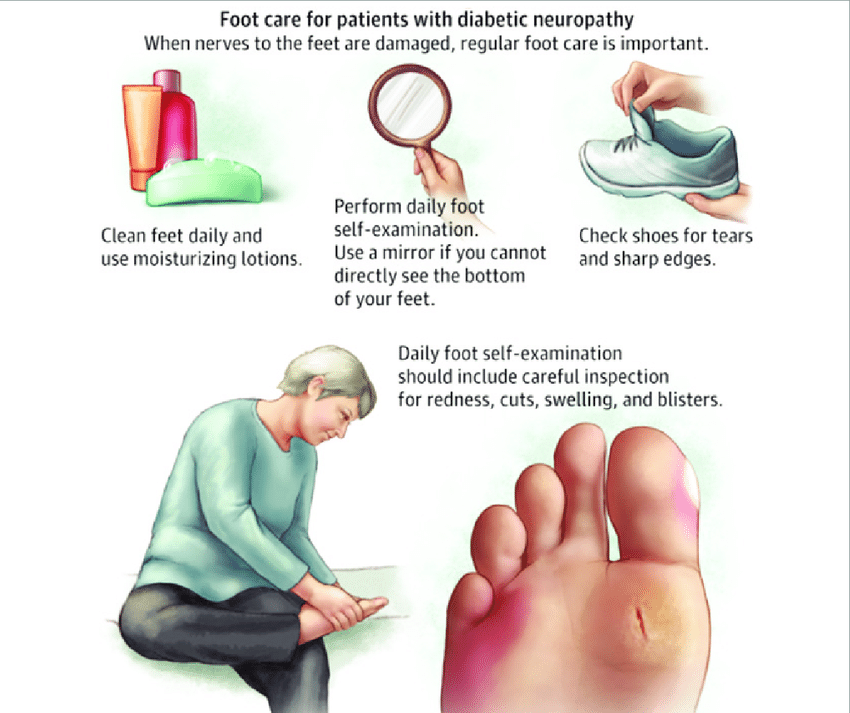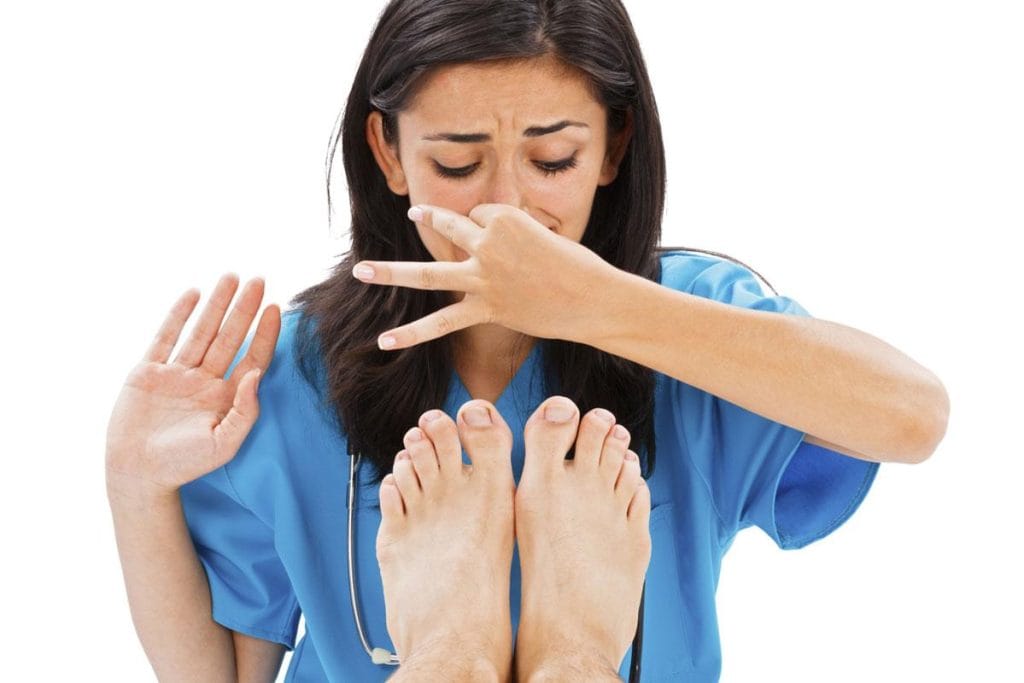10 Easy Daily Foot Hygiene Routines , Clean Feet (2025 Guide)
Discover effective daily foot hygiene routines to keep your feet clean, healthy, and free from odors and fungal infections. Learn tips and steps for optimal foot care.
Did you know that our feet carry us for an average of 110,000 miles in a lifetime? That’s equivalent to walking around the Earth more than four times! With such an important role, it’s crucial to give our feet the care they deserve through proper daily hygiene.
I’ve learned that maintaining clean and healthy feet isn’t just about aesthetics; it’s a vital part of our overall well-being. Regular foot care can prevent a host of issues, from unpleasant odors to more serious conditions like fungal infections. In this text, I’ll share my tried-and-true daily foot hygiene routines that’ll keep your feet fresh, clean, and ready for whatever life throws at them.
The Importance of Daily Foot Hygiene
Daily foot hygiene is crucial for maintaining overall health and preventing various foot problems. I’ve found that incorporating a consistent foot care routine into my daily regimen has many benefits:
- Prevents infections:
- Reduces risk of fungal infections like athlete’s foot
- Minimizes bacterial growth between toes
- Lowers chances of developing toenail infections
- Eliminates Odor:
- Removes sweat and bacteria that cause unpleasant smells
- Keeps feet fresh throughout the day
- Maintains skin Health:
- Prevents dry, cracked skin on heels and soles
- Helps avoid calluses and corns
- Improves Circulation:
- Stimulates blood flow to feet during washing
- Promotes overall foot health
- Early Detection of Problems:
- Allows for timely identification of cuts, blisters, or redness
- Enables prompt treatment of minor issues before they worsen
By washing my feet daily with lukewarm water and mild soap, I ensure thorough cleansing without damaging the skin. I pay extra attention to the spaces between my toes, as these areas are prone to bacterial and fungal growth.
After washing, I make sure to dry my feet completely, especially between the toes. This step is crucial in preventing fungal infections and maintaining overall foot health.
Regular foot inspections are an integral part of my routine. I carefully examine my feet for any changes in appearance, cuts, blisters, or redness. When necessary, I use a hand mirror to check the bottom of my feet, ensuring I don’t miss any potential issues.
By incorporating these simple yet effective practices into my daily routine, I’ve significantly improved my foot health and overall well-being.

Essential Components of a Foot Care Routine
A comprehensive foot care routine is crucial for maintaining healthy feet and preventing various issues. Here are the key components to include in your daily regimen:
Washing and Drying
Proper washing and drying are foundational to foot hygiene. I use lukewarm water and mild soap to clean my feet daily, paying extra attention to the spaces between my toes. This practice eliminates dirt and bacteria effectively. It’s important to avoid hot or cold water, as extreme temperatures can damage the skin, especially for those with diabetes or reduced skin sensitivity. After washing, I pat my feet dry with a soft towel, ensuring no moisture remains between the toes to prevent fungal growth.
Moisturizing
Moisturizing is essential for preventing dry, cracked skin on the feet. I apply a foot-exact moisturizer daily, which is thicker and formulated to penetrate the tougher skin of the feet. For intense hydration, I apply moisturizer at night and wear cotton socks to lock in the moisture. But, I’m careful not to apply moisturizer between my toes, as this can create a damp environment conducive to fungal infections. Regular moisturizing keeps my feet soft, supple, and less prone to discomfort.
Nail Trimming
Proper nail care is crucial for preventing ingrown toenails and infections. I trim my toenails straight across, avoiding rounding the corners, using clean, sharp nail clippers. The ideal length is just above the tip of the toe. After trimming, I gently file any sharp edges to prevent snagging on socks or bedding. I perform this task every few weeks or as needed, depending on nail growth. Regular trimming helps maintain healthy nails and reduces the risk of painful conditions like ingrown toenails.
Daily Inspection
I conduct a daily foot inspection to catch any potential issues early. This involves examining my feet for cuts, blisters, redness, swelling, or any changes in color or texture. I pay special attention to the soles and between the toes, areas often overlooked. For hard-to-see areas, I use a mirror or ask for help. This practice is particularly important for individuals with diabetes or circulation problems. By identifying problems early, I can seek timely treatment and prevent minor issues from becoming major concerns.
Choosing the Right Footwear
Selecting appropriate footwear is crucial for maintaining foot health and hygiene. I’ve found that the right shoes not only provide comfort but also contribute significantly to preventing various foot issues.
Material Matters
When choosing shoes, I always consider breathable materials like leather or mesh. These fabrics allow air circulation, reducing moisture buildup and minimizing the risk of fungal infections. Synthetic materials, while sometimes cheaper, often trap heat and sweat, creating an ideal environment for bacteria growth.
Proper Fit and Support
I ensure my shoes fit properly, with about a thumb’s width of space between my longest toe and the shoe’s end. This prevents blisters and allows for natural foot movement. Shoes with good arch support and cushioning help distribute weight evenly, reducing strain on exact areas of the foot.
Rotate Your Shoes
I’ve made it a habit to rotate my shoes daily. This practice allows each pair to dry completely between wears, reducing moisture and odor. It’s particularly important for athletic shoes, which tend to absorb more sweat during workouts.
Specialized Footwear for Activities
For different activities, I use specialized footwear. Running shoes for jogging, supportive sneakers for gym workouts, and appropriate footwear for exact sports. This ensures my feet receive the right support and protection for each activity.
Breathable Socks
Pairing shoes with the right socks is equally important. I opt for moisture-wicking, breathable socks made from materials like merino wool or specialized synthetic blends. These help keep my feet dry and reduce the likelihood of blisters and odor.
By following these guidelines, I’ve significantly improved my foot health and comfort. Choosing the right footwear is an essential part of my daily foot hygiene routine, complementing the cleaning and care practices I’ve already established.
Common Foot Problems and Prevention
Even though practicing good foot hygiene, certain foot problems can still occur. Recognizing these issues early and taking preventive measures is crucial for maintaining healthy feet. Here are some common foot problems and how to prevent them:
Athlete’s Foot
Athlete’s foot is a fungal infection that thrives in warm, moist environments. To prevent it:
- Keep feet dry, especially between toes
- Wear breathable shoes and moisture-wicking socks
- Use antifungal powder in shoes and on feet
- Avoid walking barefoot in public areas like locker rooms or pools
- Change socks daily or more often if feet sweat excessively
I’ve found that alternating between different pairs of shoes and using a UV shoe sanitizer has significantly reduced my risk of developing athlete’s foot.
Ingrown Toenails
Ingrown toenails occur when the nail grows into the surrounding skin. Prevention includes:
- Trimming toenails straight across, not rounding corners
- Avoiding tight-fitting shoes that compress toes
- Wearing protective footwear for activities that may injure toes
- Keeping feet clean and dry to prevent infections
- Using proper nail care tools and techniques
By following these practices, I’ve successfully avoided painful ingrown toenails and maintained healthy nails.
Foot Odor
Foot odor results from bacteria thriving in sweaty environments. To combat it:
- Wash feet daily with antibacterial soap
- Dry feet thoroughly, including between toes
- Use antiperspirant or foot powder to reduce sweating
- Wear moisture-wicking socks and breathable shoes
- Rotate shoes daily to allow them to dry completely
- Consider using odor-absorbing insoles or shoe deodorizers

I’ve found that incorporating these habits into my daily routine has effectively eliminated foot odor issues.
Specialized Foot Care Considerations
While general foot hygiene practices are essential for everyone, certain groups require specialized care. I’ll discuss exact considerations for diabetic and pediatric foot care, which are crucial for maintaining optimal foot health in these populations.
Diabetic Foot Care
Diabetic foot care demands extra attention due to the increased risk of complications. I always emphasize the importance of daily foot inspections for diabetics, as they may have reduced sensation in their feet. Using a mirror to check the soles is crucial. Moisturizing is vital, but I recommend avoiding application between the toes to prevent fungal growth. Diabetics should trim their toenails straight across to prevent ingrown nails. I advise wearing well-fitting, supportive shoes and moisture-wicking socks to reduce the risk of blisters and ulcers. Regular check-ups with a podiatrist are essential for early detection and treatment of any foot problems.
Pediatric Foot Care
For children’s foot care, I focus on establishing good habits early. I recommend washing children’s feet daily with mild soap and lukewarm water, ensuring thorough drying between the toes. Moisturizing is important, but I suggest using gentle, fragrance-free products to avoid skin irritation. When trimming nails, I advise cutting straight across to prevent ingrown toenails. It’s crucial to regularly check the fit of children’s shoes, as their feet grow quickly. I emphasize the importance of allowing barefoot time at home to promote natural foot development. For active children, I recommend breathable shoes and moisture-wicking socks to prevent fungal infections and blisters.
When to Seek Professional Help
While daily foot hygiene routines are essential for maintaining healthy feet, there are times when professional help is necessary. I’ve learned through experience that certain symptoms or conditions require the expertise of a podiatrist or healthcare provider.
Persistent pain or discomfort in your feet or ankles is a clear sign to seek professional help. This could indicate underlying issues such as plantar fasciitis, stress fractures, or tendonitis. If you notice any unusual swelling, redness, or warmth in your feet, it’s time to consult a doctor, as these may be signs of infection or inflammation.
Changes in the appearance of your toenails, such as thickening, discoloration, or separation from the nail bed, often require professional treatment. These symptoms can indicate fungal infections or other nail disorders that may not respond to over-the-counter remedies.
For diabetics, any foot-related issues should be addressed promptly by a healthcare professional. Even minor cuts, blisters, or sores can lead to serious complications due to reduced sensation and poor circulation associated with diabetes.
If you develop persistent athlete’s foot or other fungal infections that don’t improve with home treatment, it’s time to see a podiatrist. They can prescribe stronger antifungal medications and provide guidance on preventing recurrence.
Ingrown toenails that cause severe pain, redness, or pus formation require professional intervention. A podiatrist can safely remove the ingrown portion and prevent further complications.
Finally, if you notice any new growths, moles, or changes in skin texture on your feet, consult a dermatologist or podiatrist. These could be early signs of skin cancer or other dermatological conditions that require prompt attention.
Remember, early intervention can prevent minor foot issues from becoming major problems. Trust your instincts and seek professional help when you’re unsure about the health of your feet.
Conclusion
Maintaining proper foot hygiene isn’t just about cleanliness—it’s a crucial aspect of overall health. By incorporating these daily routines into your life you’ll be taking important steps towards healthier happier feet.
Remember that consistency is key. It’s not about perfection but about making these practices a regular part of your day. Your feet carry you through life and they deserve the best care possible.
I’ve seen firsthand how these simple yet effective habits can transform foot health. So start your journey to better foot care today. Your feet will thank you for years to come.

